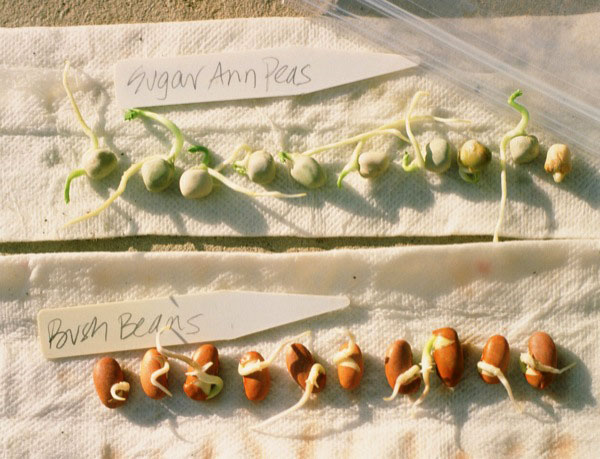The details below were put together for an activity FSN had at our display table at FEASt Fest this past weekend. FEASt Fest was a huge success, especially the theme of seeds! Congratulations to FEASt for making it to a 5th fabulous year of this event! You can check out pictures from the event on the FEASt facebook page.
Seed Germination Tests
Why? To save yourself the time, energy and resources cultivating seeds that are unlikely to grow.
Doing a germination test is a great idea before planting seeds that you're not sure are still viable (able to grow). That may be the case because the seeds are old, or have been exposed to water, light, heat, insects or other conditions that aren't ideal. Germination tests give you a good idea of how resilient your seeds are, so that you can make a plan for how many of them to plant or whether it is worth planting them at all.
“Germination is the process by which plants, fungi and bacteria emerge from seeds and spores, and begin growth.” (Wikipedia)
Germination rate- The % of seeds that sprout when doing a germination test. Ideally plant seeds with a germination rate of 85% or more, although that isn't always possible. Just in case always plant extra seeds, Garden Mind recommends 10-20% extra seeds be planted.
Seed germination test- a sample group of seeds is sprouted to test their ability to grow. The results from the seeds in a germination test represent what is likely to happen with a bigger batch of those same seeds when planted in a garden.
Example: At FEASt Fest you picked up a free pack of kale seeds in the seed swap. You know they are a few years old and so you decide to do a germination test with 10 seeds, to learn if the pack is worth planting in your community garden plot.
Steps (video demo below):
1. Fold a piece of paper towel or a coffee filter into a double layer. Moisten the paper towel so that it is evenly damp, but not soaking wet.
2. Place 10 seeds on one half of the paper towel and then fold the paper towel over them so that they are covered.
3. Put the paper towel and seeds gently into a re-sealable bag or container and close it 3/4 of the way, leaving some room for air to flow.
4. Label the bag with the date and seed name.
5. Place the germinating seeds in a warm spot, like on top of the fridge.
6. Check the seeds every day, re-wetting the paper towel as needed to keep it damp. Expect to see germinated seeds within 3-10 days.
7. After the first seeds germinate wait another day or two to give slow ones some extra time.
8. Calculate your germination rate as a percentage of how many seeds have sprouted out of 10.
9. Plant the seeds if they have a good germination rate or eat or compost the seeds if they don't. Compost the paper towel.
Note: Not all seeds that germinate will survive to grow into mature plants. The number of germinated seeds that survive to maturity is called the 'rate of viguor' . Give your newly germinated seeds the best conditions possible to thrive. Use the FSN and Garden Mind teleconference about seed starting as a resource or visit the Garden Mind website for more information. Sow more seeds than you need to grow, to improve your odds of getting a good harvest. You can always thin out (rogue) extra plants later and either compost them or share them with friends.
This quick video demonstrates how to follow the steps above.





